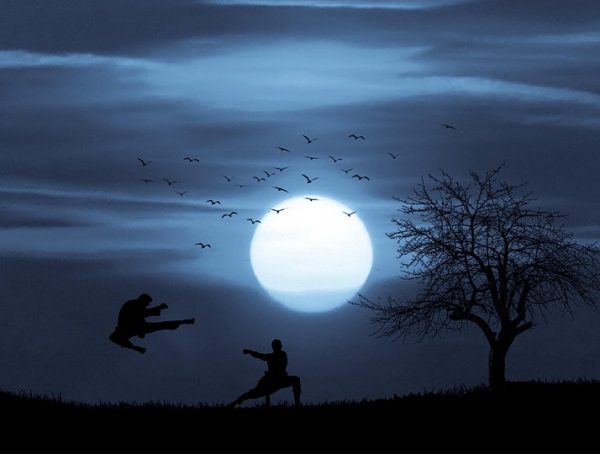The Impact of Kung Fu Panda 3 on Animation Film History
Introduction
In the vibrant landscape of animated films, few titles resonate as deeply as DreamWorks’ iconic “Kung Fu Panda” series. Released in 2016, “Kung Fu Panda 3” not only captivated audiences with its charm and stunning animation, but it also marked a significant milestone in the evolution of animated storytelling and character development. This article explores the profound impact of “Kung Fu Panda 3” on animation film history, emphasizing its contributions to narrative depth, cultural representation, and the art of visual storytelling.
Legacy of the Kung Fu Panda Series
The original “Kung Fu Panda,” released in 2008, introduced audiences to Po, a lovable and bumbling panda with dreams of becoming a kung fu master. The series quickly evolved, with “Kung Fu Panda 2” expanding on Po’s backstory and the introspective themes of identity and belonging. By the time “Kung Fu Panda 3” debuted, the film had the opportunity to blend humor, action, and heartfelt storytelling, bringing new dimensions to Po’s journey.
Cultural Representation
One significant impact of “Kung Fu Panda 3” was its commitment to cultural representation. Unlike many mainstream animated films, “Kung Fu Panda 3” not only features a rich tapestry of Asian culture but also integrates elements of Chinese philosophy and martial arts. This representation allows diverse audiences to engage with the film in a manner seldom seen in Western animation.
The film’s focus on “Qi” (energy flow) and the importance of family ties highlights the cultural nuances embedded within the narrative, offering a viewing experience that is both entertaining and educational. This cultural depth enhances the film’s authenticity and encourages future animated features to embrace diverse storytelling techniques.
Character Development
In “Kung Fu Panda 3,” character development takes center stage. Po’s journey toward self-discovery culminates in his relationship with his biological father, Li Shan, and the depiction of the panda village. Here, the film highlights the dynamics of father-son relationships, underscoring themes of acceptance and personal growth. Such emotional depth sets “Kung Fu Panda 3” apart from conventional animated narratives, encouraging future filmmakers to prioritize character arcs and emotional resonance.
Po’s interactions with both his biological father and his adoptive father, Mr. Ping, showcase the complexities of familial relationships. This portrayal aligns with the emerging trend in animated films where characters are given more dimensions beyond their immediate comedic or heroic traits. “Kung Fu Panda 3” sets the bar for inclusive storytelling that resonates with both kids and adults, empowering future animated films to delve into familial themes.
Visual Storytelling and Animation Techniques
The animation of “Kung Fu Panda 3” showcases unparalleled artistry and innovation. The film’s unique blend of 3D animation with 2D and traditional Chinese art forms invites viewers into a visually stunning world. The use of expressive colors, fluid movements, and intricate backgrounds not only enhances the narrative but also immerses the audience in the panda village’s vibrancy and richness.
The fight scenes are choreographed with a level of artistry reminiscent of martial arts films, marrying visual flair with narrative urgency. With a focus on detail and authenticity, “Kung Fu Panda 3” pushes the boundaries of what animated films can achieve, inspiring animation studios globally to invest in creating visually compelling stories.
Inspiring Subsequent Works
The success of “Kung Fu Panda 3” has far-reaching implications beyond its immediate box office success. The film exemplifies how animated features can handle complex themes with humor and depth, influencing studios to tackle more intricate stories that resonate with various demographics. As animation technology advances, filmmakers are inspired to craft narratives that are more than just visually appealing—they are engaging, thought-provoking, and meaningful.
In the years following its release, films such as “Spider-Man: Into the Spider-Verse” and “Coco” have embraced similar storytelling techniques, weaving in cultural themes and intricate character arcs that challenge traditional norms within animation. “Kung Fu Panda 3” demonstrates the potential of animated storytelling as a medium for deeper exploration of the human experience, encouraging subsequent releases to follow suit.
Action Steps for Readers
-
Watch and Analyze: Revisit “Kung Fu Panda 3” and reflect on the themes presented. Consider how emotional depth and cultural representation positively influence your viewing experience.
-
Engage with the Community: Participate in forums or social media discussions about how animated films can shape cultural understanding and societal perceptions.
-
Support Cultural Diversity: Seek out and promote animated films that incorporate various cultural narratives. Share your recommendations with friends and family.
-
Explore Animation as an Art Form: If you’re interested in animation, consider taking a class or participating in workshops that teach animation techniques. Understanding the craft can deepen your appreciation for animated films.
- Encourage Future Filmmakers: If you’re a budding filmmaker or animator, study the various elements that made “Kung Fu Panda 3” successful. Consider how you can incorporate diverse perspectives and character-driven storytelling into your work.
Conclusion
“Kung Fu Panda 3” serves as a testament to the power of animation not just as a form of entertainment, but as an impactful storytelling medium. It challenges future animators to merge cultural authenticity with emotional depth, setting a new standard for animated films. As viewers, we are encouraged to embrace these stories, support diversity in film, and recognize the invaluable lessons presented through cartoon narratives.
As you reflect on the inspiring journey of Po and the panda village, remember:
“The greatest glory in living lies not in never falling, but in rising every time we fall.” – Nelson Mandela.
If you enjoyed this article, please consider sharing it with others who appreciate the power of animation. Together, let’s keep the conversation going about the impact of animated films!
You might also like
More from Love & Lifestyle
RJ Mahvash Lavishes Praise On Yuzvendra Chahal Amid Dating Rumours, Calls Punjab Kings Player ‘Great, Most Caring Person’
Yuzvendra Chahal and RJ Mahvash have been rumoured to be dating shortly after the cricketer's divorce was finalised with …
Is being good with pets a green flag? Relationship expert shares how this may be the new love language
When you are on a dating app and swiping through profiles, have you come across one that …
Stebin Ben shuts down dating rumours with Nupur Sanon, says their bond is purely platonic: ‘Yes, I am single’ | Hindi Movie News
Singer Stebin Ben has officially addressed long-standing speculation about his relationship with Nupur Sanon, and fans hoping …

































